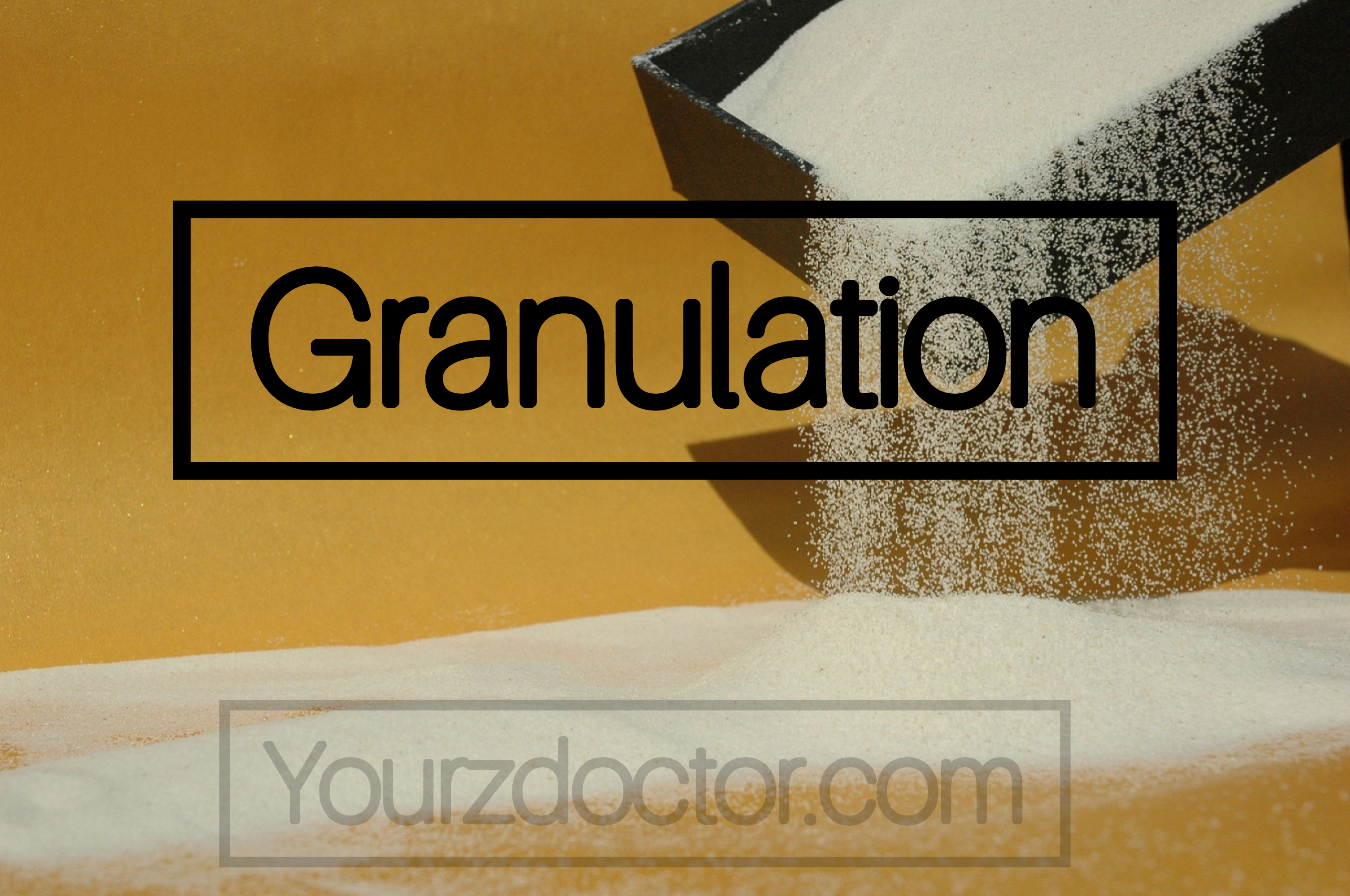Granulation is the technique which is used to convert coarse or fine particles into larger and stronger agglomerates, having better flow properties, better uniformity and compression properties. It is basically the size enlargement process.
OR
Granulation is the process of enlargement of particles by using agglomeration techniques. It converts fine powders into dust free and free flowing granules that can easily be compressed.
OR
Granulation is most
important operation in formulation of oral dosage form used to improve flow
characteristics, to prevent segregation of particles and to improve compression
properties of the particles.
Advantages of granulation:
- Uniformity of the product can be achieved.
- Powder density uniformity can be achieved.
- Disintegrated tablets can be prepared.
- Sustained release and combination tablets can be prepared.
- Hydrophobic and oily substances can be prepared through this technique.
- Drugs with high melting points can be prepared.
- Apart from pharmaceuticals this technique can be used in paint industries.
- Cosmetic industries can also utilize this technique.
- Dry syrups can be prepared by using this technology.
- Applicable in manufacturing of sterile products.
- Sensitive Active Pharmaceutical Ingredients APIs can be protected from the outer environment.
- In Pneumatic Dry Granulation (PDG) techniques granulation of thermo labile and hygroscopic materials can be achieved.
- Through PDG high drug-loading of difficult materials can be achieved.
- PDG can provide excellent shelf life and stability.
- Through Highly Shear Mixture Granulation highly cohesive materials can be treated so well.
Disadvantages of granulation:
- Loss of material during various stages occurs.
- Sometimes it is not cost effective.
- Sometimes heavy duty press is required.
- In dry granulation thorough color distribution cannot be achieved.
- In some process like Moisture activated Dry Granulation (MADG) thermo labile, hygroscopic compounds cannot be prepared.
- In case of MADG high drug-loading cannot be achieved.
- Due to double-compression forces degradation of materials can occur in cas of PDG.
- Techniques like Thermal Adhesion Granulation (TAG) are not good for substances having melting point greater than 130°C.
Granulation Process:
It is techniques of binding particles
together by creating linkage between them. These are formed through compression
or by using binding solution that’s forms links between active ingredient and
excipient.
Ideal Characteristics of Granules:
- Good flow.
- Good compressibility.
- Sufficient hardness.
- Adequate moisture content.
- Spherical shape.
- Small particle size distribution.
Reasons of granulation:
- Improvement of compaction characteristics.
- Hygroscopic materials which forms cake on standing need this technology to avoid this hazard.
- Improvement of flow property.
- Prevention of segregation.
- Convenient for shipping and storage.
Stages of Granulation:
There are four stages
involved in the process of granulation.
Stage 1 of granulation
Pendular stage of granulation:
When binding agent is
added this is the very first stage of granulation process.
Stage 2 of granulation
Funicular stage of granulation :
In this stage there is
incorporation of binding agent in between the particles.
Stage 3 of granulation
Capillary stage of granulation:
In this stage through
capillary action the binding solution is being entrapped. Good quality of
granules can be obtained through this stage.
Stage 4 of granulation
Droplet stage of granulation:
This stage is not
desirable in this stage due to over wetting droplets may form.
Learn more
Searching Tags
What is granulation?
Top 3 definitions of
granulation
Best definition of
granulation
Advantages of
granulation
Top 10 advantages of
granulation
Top 5 advantages of
granulation
Disadvantages of
granulation
Top 10 disadvantages
of granulation
Top 5 disadvantages
of granulation
What are the
granulation processes
Ideal characteristics
of granules
What is the ideal
characteristic of granules?
Reason of granulation
What is the reason of
granulation?
What is the main
reason of granulation?
Stages of granulation
What is the 4 stages
of granulation
Top 4 stages of
granulation
Stage 1 of
granulation
What is the pendular
stage of granulation ?
Pendular stage of
granulation
Stage 2 of
granulation
Funicular stage of
granulation
What is the funicular
stage of granulation?
Stage 3 of
granulation
Capillary stage of
granulation
What is the capillary
stage of granulation?
Stage 4 of
granulation
Droplet stage of
granulation
What is the droplet stage of granulation?






0 Comments